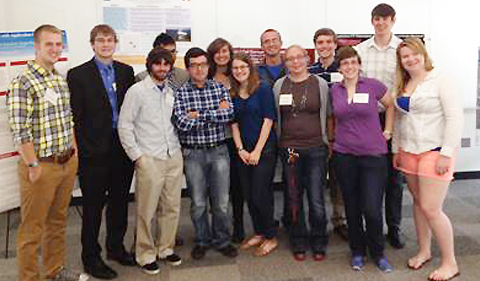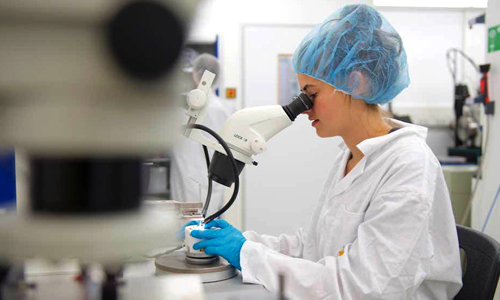By Samantha Thrush
B.S. HTC Astrophysics, Class of 2015
 I spent my summer doing research on injecting simulated continuous gravitational waves into real gravitational wave data at the Laser Interferometer Gravitational Wave Observatory (LIGO) at the University of Minnesota-Twin Cities in Minneapolis. My funding came from a National Science Foundation Research Experience for Undergraduates (REU) Award.
I spent my summer doing research on injecting simulated continuous gravitational waves into real gravitational wave data at the Laser Interferometer Gravitational Wave Observatory (LIGO) at the University of Minnesota-Twin Cities in Minneapolis. My funding came from a National Science Foundation Research Experience for Undergraduates (REU) Award.
My UMN faculty advisers at the observatory were Dr. Vuk Mandic, Assistant Professor of Physics, and Dr. Gwynne Crowder, Research Associate, both astronomers at the School of Physics and Astronomy at UM. Gravitational waves we simulate and study are ripples in space-time caused by the motion of massive objects. They are a prediction of Einstein’s Theory of General Relativity, but have never been directly observed.
The Laser Interferometer Gravitational Wave Observatory (LIGO) is a set three of world-class gravitational wave observatories located in two locations: Livingston Parish, LA, and Hanford, WA. As it stands currently, all data from LIGO consists of either environmental or instrumental noise. The motivation for this project was to see what the output data would look like if LIGO was to observe a gravitational wave signal from a pulsar, which creates a continuous source of gravitational waves.
My objective was to see how frequency shifting of the signals responded to binning, which could glean information about how otherwise strong signals could be obscured if the signal fell between two frequency bins. After testing the new code, I found that the simulated data signals were too weak to resolve any simulated gravitational wave pulsar signals during the simulated data addition trial.
The code did seem to work well in its real data/simulated data replacement functionality. This was found with two trials whose outputs were identical: processing only the simulated data with code developed for this project and processing the simulated data as real data with the original radiometer code. Simulations are currently running in order to create a stronger signal which could be resolved in the simulated data addition trial.
If LIGO is able to detect and measure the characteristics of gravitational waves, it will open insights into the nature of neutron stars and black holes, as astronomers will be able to watch their formation events via gravitational radiation.
My REU internship at UMN on LIGO research helped me to advance my understanding of continuous gravitational waves and the simulations used for such research. I really enjoyed the UMN campus, making new friends, as well as my opportunity to do thesis research in such a large and largely open field. I would definitely encourage undergrads in the sciences to find out all you can about REU summer positions in the areas they’re passionate about—to learn by experience!
Samantha Thrush – Intern with Drs. Vuk Mandic and Gwynne Crowder at the University of Minnesota-Twin Cities in Minneapolis – senior at Ohio University – Honors Tutorial College – astrophysics major




















Comments